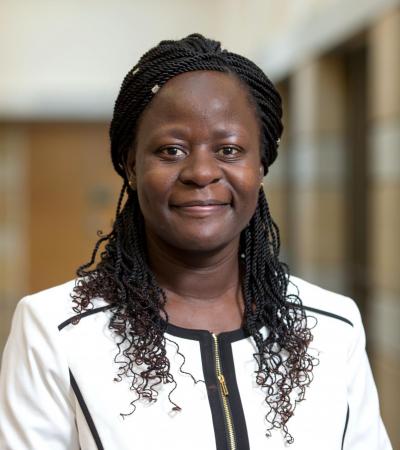Nurturing Social Enterprises
Nurturing Social Enterprises
Small-scale rural entrepreneurs in Uganda have had little access to formal microfinance, but a program growing out of Ford Program supported savings and internal lending communities – or SILC groups – in Nnindye is trying to change that by investing in an innovative effort to meet community needs through the power of supportive relationships, as well as funding.
Initiated by the SILC groups in 2014 with the support of the Ford Program and long-time partner Uganda Martyrs University, the Social Enterprise Project (SEP) identifies promising entrepreneurs, providing them with small- to medium-sized loans to grow their businesses. Notably, it is the support and financial guarantee of fellow group members that allow the entrepreneurs to access funds.
For us as researchers, SEP provides a unique opportunity because there are few programs that combine lending with savings groups. In our research, we hope to learn how both the loans and the social and financial relationship with the SILC groups affect the development of the entrepreneurs’ businesses.
Project implementation
The project has had several phases. First, with Uganda Martyrs University, we conducted a baseline study to understand the knowledge and needs of the entrepreneurs and their SILC groups. Next, entrepreneurs received training on how to develop a business plan and were paired with mentors – more experienced entrepreneurs in the same field of work. Finally, they applied for and received their loans.
Currently, the majority of the entrepreneurs – 22 out of 30 – have received their loans and are paying them back. We will conduct an endline evaluation focused on understanding the impact of the loans a year after they were dispersed.
How loans affect entrepreneurs and their community
Early reports collected by Project Manager Francis Sejjiko from some of the first SEP entrepreneurs demonstrate 1) how the loans have helped in the start-up or expansion of small businesses, and 2) how the benefits have spread to the wider community through job creation, availability of needed goods, and support for entrepreneurs’ families. We think these stories are illustrative of what we are hearing partway through the project.
- Swahib Kigongo used his own savings along with his SEP loan to start a poultry business. He now has nearly 1,000 chickens producing eggs for sale at market, with demand regularly exceeding his supply. He aims to expand further, doubling his chickens by 2019. With his profits, he has been able to support his family and repay his loan on time, and he now employs five people.
- Christine Mukalazi, a small piggery owner with just a few pigs, was able with her SEP loan to buy four more pigs, which in turn produced 15 piglets. She has been able to sell both some of the piglets and, for pork, the older pigs. Her expanded business has allowed her to repay the loan, employ a casual laborer, and pay school fees for her grandchildren.
-
Nzirwanaho Charles, a 30-year-old man new to farming, was inspired by the business training to start a banana farm, using his SEP loan for fertilizer and mulch. With his profits, Charles has been able to support his family and buy a small plot of land, where he plans to construct a home for his family later this year.
Lessons learned
We have learned three major lessons so far:
- In projects with rural adults, literacy is an important consideration. Future business training should be further adapted to the low literacy and education levels of the entrepreneurs and SILC groups.
- Working with the Ugandan microfinance institution posed an administrative challenge. Our project manager has identified a bank whose local branches and relationship with the local university should make it more convenient.
- Loan repayment schedules should take into account the seasonality of farming income, which has challenged some borrowers.
We look forward to exploring these issues and more in our endline study, which will focus especially on the relationship between SILC group members and their chosen entrepreneurs, along with the effect of the loans on SEP entrepreneurs’ profits.







